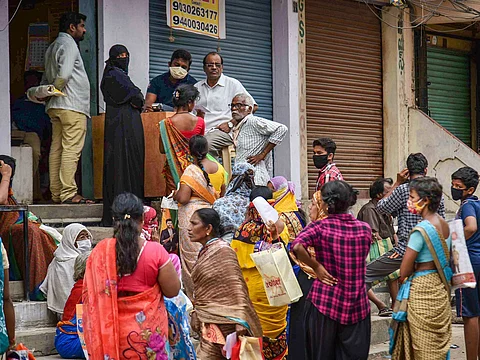

As part of the second tranche of announcements of the Rs 20 lakh crore Atma Nirbhar Bharat scheme, Finance Minister Nirmala Sitharaman on Thursday announced that the ‘One Nation, One Ration card’ scheme will be implemented across the country. Aimed at making ration accessible to migrant workers, the FM said that 67 crore beneficiaries across 23 states will be covered by the scheme by August 2020.
So, what is the ‘One Nation, One Ration Card’ scheme?
The scheme is intended to make existing ration cards portable across the country so that migrants working in a different state can receive food grains from any fair-price shop (FPS) across the country, without having to get a new card.
The Finance Minister said in the press conference that by March 2021, there will be 100% coverage of the national portability of ration cards.
The scheme was originally announced in June last year, and the government said at the time that eligible beneficiaries would be able to avail their entitled food grains under the National Food Security Act (NFSA) from any fair-price shop in the country.
Until now, a person could only receive food grains from the state that they were issued the ration card in. Moving to a different state meant applying for a new ration card to be eligible to receive food grains.
This scheme is aimed at benefiting migrant workers who often move states in search of employment and livelihood opportunities.
It also assumed significance at a time when thousands of migrant workers have begun returning to their home states due to lack of income, food and means of livelihood in the state where they are working – with many of them walking home because of inadequate planning and delayed transport from the government.
The government said at the time that it wants to implement the scheme across the country effective June 1, 2020.
So far, 17 states have been integrated with the scheme. On January 1, 2020, Andhra Pradesh, Goa, Gujarat, Haryana, Jharkhand, Karnataka, Kerala, Madhya Pradesh, Maharashtra, Rajasthan, Telangana and Tripura were integrated into the scheme, followed by Bihar, UP, Punjab, Himachal Pradesh and Daman and Diu in May.
Last year, the Centre designed a standard format for all ration cards and asked state governments to follow that format while issuing fresh ration cards. However, the government clarified in February 2020 that old ration cards will continue to remain valid throughout the nation.
For new cards issued in the standardised format, the Centre has asked states to issue it in a bi-lingual format, which would include the card-holder’s regional language and Hindi or English as the other language.
As per reports, the Centre also asked states to keep one standard 10-digit ration card number, where the first two digits represent the state code, followed by the running ration card number. The idea is to create a unique member ID for each family.
Elaborating on the technology-driven system behind the portability of the cards, Finance Secretary Ajay Bhushan Pandey said that in every ration card, all family members are seeded with their Aadhaar numbers. “That gives them the advantage. Say a family member is in a different city, through his Aadhaar card, he can withdraw the ration quota that the remaining family members have not withdrawn yet,” he said.
Portability of benefits of PDS was first suggested by a task force headed by Nandan Nilekani in 2011, which drew out a strategy for a ‘next generation national Public Distribution System.’ In the report on the strategy, the committee had suggested a PDS Network and said that the PDSN could enable Aadhaar-based solutions for ration card registration, identification, authentication, and payments. This report also spoke of full portability of benefits, allowing beneficiaries to visit any FPS.